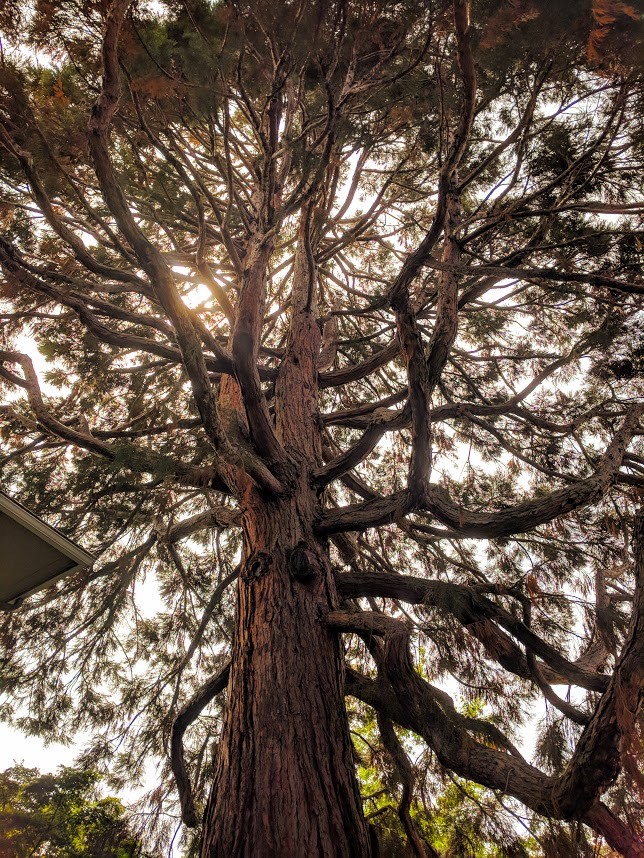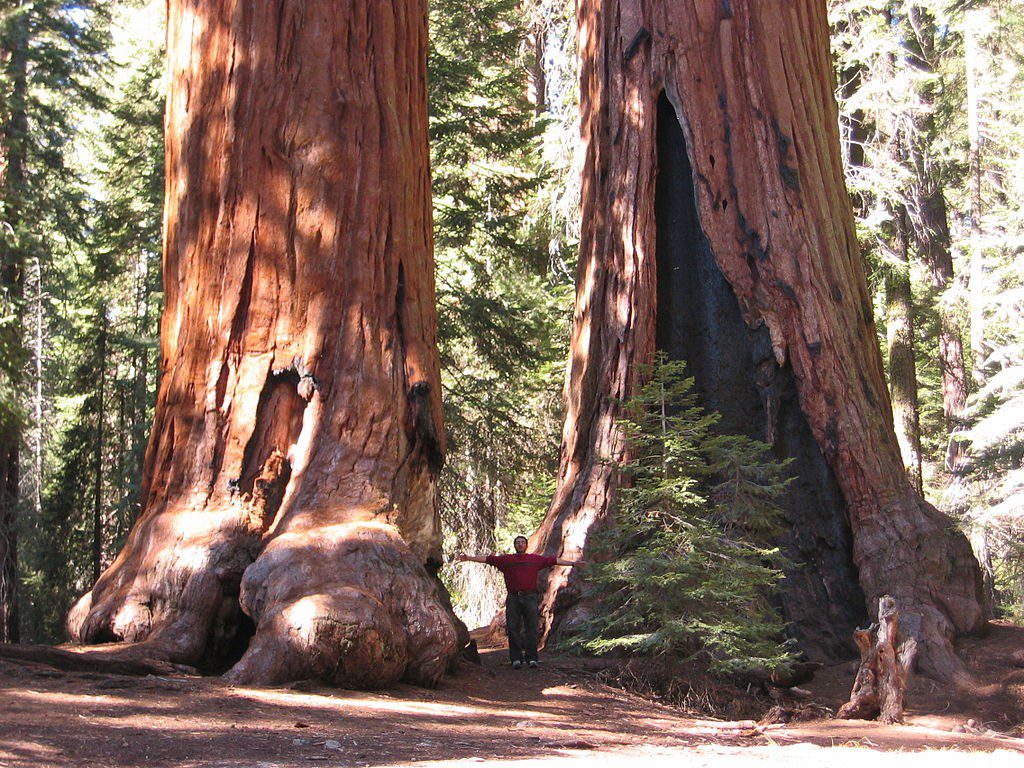- About Us
- Our Work
- Tree Info
- Get Involved
- Blog
- Volunteer
- Support Us
By Canopy Team on July 9, 2018

Photo by Laura Camp
Tree Spotlight Series: Follow along in this series as we learn about the fascinating trees that live among us. This series is in partnership with Rhee Lab in the Plant Biology Department of the Carnegie Institution for Science.
Read the first two posts in this series featuring the Ginkgo biloba and Douglas fir.
The giant sequoia (Sequoiadendron giganteum) is one of three types of redwoods, alongside the coast redwood (Sequoia sempervirens) and the dawn redwood (Metasequoia glyptostrobides). The redwoods are nature’s skyscrapers, growing to an average height of 150-300 feet. The tallest known giant sequoia stands at 311 feet tall—that’s as tall as a 29-story building! The award for the most massive single organism goes not to a blue whale, but to a giant sequoia named General Sherman, located in Sequoia National Park in California.

The common name sequoia was described by Austrian linguist and botanist Stephan Endlicher in 1847, although the origin of the name remains a mystery. The most accepted guess is that the name was given in honor of Sequoyah, a Cherokee silversmith who created the Cherokee syllabary and written language. The giant sequoia was also considered an important tree by the Native Americans that lived around the Sierra Nevada and in Sequoia National Park.
The giant sequoia needs constant sun to thrive, so it shoots upward and towers above other trees. Seedlings are vulnerable and can quickly be choked out in the shade of other plants. Natural forest fires caused by hot and dry summers help clear out other growth around the sequoias. Most other conifers secrete pitch and resin, which makes them very flammable. However, Sequoias are fire resistant since they do not make either substance.
Natural fires rarely get through the bark of mature sequoias, which can grow up to two feet thick. Hot air from the fire rises and dries up the cones high up in the branches of sequoias. This causes them to open and disperse seeds, and guarantees that seedlings grow only after the surrounding area has been cleared out.
The oldest known giant sequoia is 3500 years old—one of the oldest living organisms on Earth. It has many adaptations that make it resistant to predators and the environment. For example, its thick bark contains a high amount of tannin. Tannins are a group of phenolic compounds that are used to tan hides into leather, and are responsible for the dry, bitter feeling after drinking red wine or coffee.

In the giant sequoia, tannins give the tree trunk its signature reddish color and deter insects from chewing through the bark.
Another adaptive trait is its brittle wood. Standing so tall above other trees makes the giant sequoia vulnerable during storms or heavy winds, since they could uproot and topple the whole tree. Instead, the brittle wood will break and the tree will drop its branches while protecting the sturdy trunk.
The giant sequoia and coast redwood are the two state trees of California, where they grow in abundance. National parks in California that showcase the redwoods draw in tourists all around the world. Many wish to walk in a quiet wood, standing among ancient giants.


Galyna Vakulenko is a 2018 summer intern at the Rhee Lab in the Plant Biology Department of the Carnegie Institution for Science at Stanford University. She is an undergraduate student majoring in plant physiology at Carleton University in Ottawa, Canada.